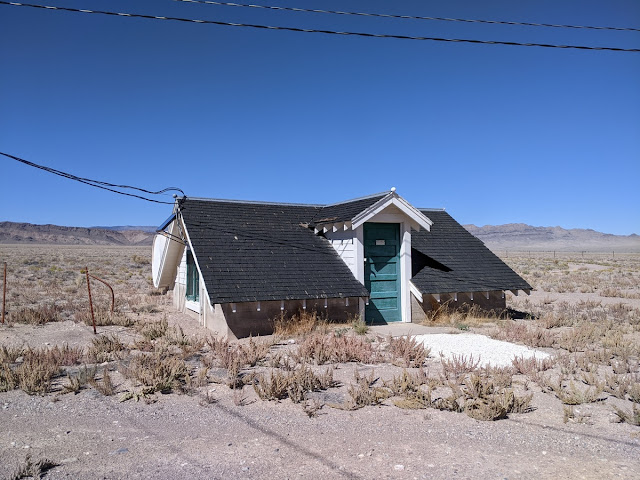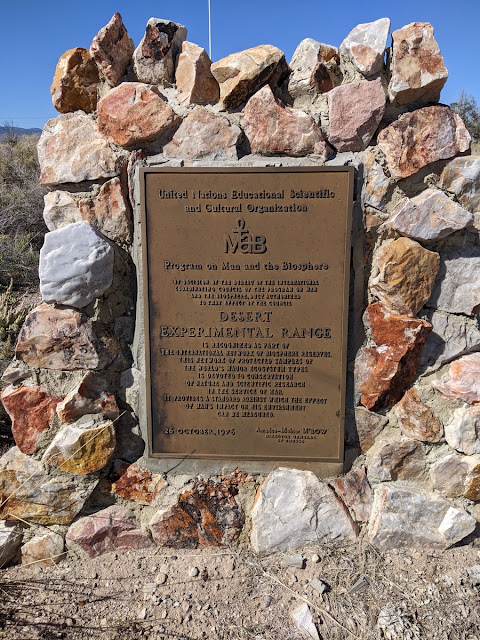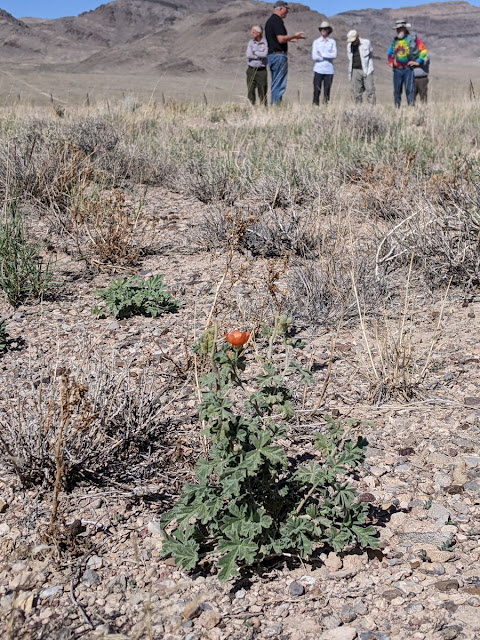We had the chance to go on a tour of the Desert Experimental Range in the West Desert of Utah recently. This is one of many experimental areas run by the US Forest Service. Most are experimental forests, but a couple are experimental ranges. This one was designated in 1933 by President Hoover, and the CCC helped build it, including the impressive entrance.
Although we were early for the tour, others were already there when we arrived. We joined the group, led by Stan Kitchen, retired USFS research scientist who had managed the Desert Experimental Range for decades.
Because the Desert Experimental Range is so remote, it has numerous buildings so people can stay there. We went into the dorm, while the north house and south house are also still kept up for visitors. Because of their age, the buildings are part of the National Register of Historic Places.
We were allowed to go into some of the buildings. There are two houses and a dormitory that are still used regularly.
Here's the interior of the dorm.
Outside of the dorm.
There's even an old tennis court!
The South House has some trees of varying health around it.
Interior of the south house.
I thought this old light fixture was cool.
There are some interpretive signs giving additional information.
I think this is the old Ice House.
The utility section is located a short distance away.
Although the houses have modern plumbing, there's a scenic outhouse on the premises.
There are also barns and trailers. They didn't look like they've been used lately.
The Desert Experimental Range has been designated as a United Nations Biosphere Reserve.
Another view of the housing area.
Then we toured part of the range, where fences have allowed various treatments over the decades. Most of the studies have focused on various cattle and sheep grazing regimes and how they impact the vegetation.
Although this trip was in October, we found some flowers blooming, like this globemallow.
Stan pointed out the "silver dollars," circles where gophers have eaten vegetation and in good conditions winterfat grows hardily. In many circles throughout the region, cheatgrass has taken over. I was delighted and baffled to find some harvest ant circles nearby. I'd love to know more about what determines which is predominant.
On the driving tour there are also interpretive signs.
Some robust globemallow! The group is talking on the other side of the fence.
One of the biggest issues is the halogeton invasion of winterfat shrublands. Halogeton is poisonous to livestock. Winterfat is very nutritious. But it appears halogeton often outcompetes winterfat, and no one knows how to reverse that trend.
Some of the beautiful winterfat, also known as white sage.
You can find out lots more about the Desert Experimental Range at: Desert Experimental Range | Rocky Mountain Research Station (usda.gov)




































